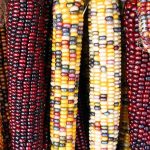Hong Ren, Zheng Liu, Xinbing Wang, Wenbin Zhou, Baoyuan Zhou, Ming Zhao, Congfeng Li
Long-term excessive nitrogen (N) application does not increase or even decreases grain yield and N use efficiency (NUE) of maize, in which the roles of root morphological and physiological characteristics are not clear. The goal of this study was to explain the mechanism underlying no increment in grain yield under excessive N application from the perspective of root morpho-physiological characteristics. A 10-year long-term N fertilizer trial was conducted in Jilin Province, Northeast China, growing maize at three N fertilizer levels (zero N, N0; recommended N, N2; and high N level, N4) in 2019, 2020 and 2021. Two widely planted maize genotypes: ‘Xianyu 335’ (XY335) and ‘Zhengdan 958’ (ZD958) were used. Grain yield, N content, root morphology and other physiological characteristics were analyzed to further evaluate the relationships between N uptake, N utilization, plant growth, and root systems under different N treatments. Compared with N0, root biomass, post-silking N uptake and grain yield were significantly improved with increased N input, whereas no significant differences were observed between recommended N and high N. High N application increased root length and root surface area, but decreased root activity (measured by TTC (2,3,5-triphenyltetrazolium chloride) method), nitrate reductase activity and root activity absorbing area regardless of genotypes. Root length and root to shoot ratio negatively contributed to N uptake (by -1.2% and -24.6%), while root surface area, root activity, nitrate reductase activity and root activity absorbing area were positively contributed to N uptake. The interaction effect between cultivar and N application was significant on NUE. XY335 obtained the highest NUE (11.6%) and N recovery efficiency (18.4%) through higher root surface area (23.6%), root activity (12.5%), nitrate reductase activity (8.3%) and root activity absorbing area (6.9%) compared with other treatments. Overall, recommended N application promoted Post N uptake, NUE and grain yield by root surface area and root activity, nitrate reductase activity and root activity absorbing area, while high N application did not increase or even decreased NUE by reducing root surface area, root activity, nitrate reductase activity and root activity absorbing area. Our case study successfully revealed that root surface area, root activity, nitrate reductase activity and root activity absorbing area were the limiting factors of NUE increase under high N application.
